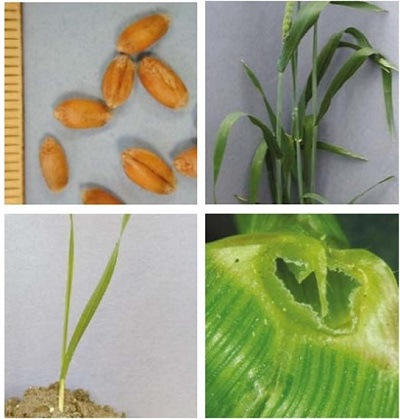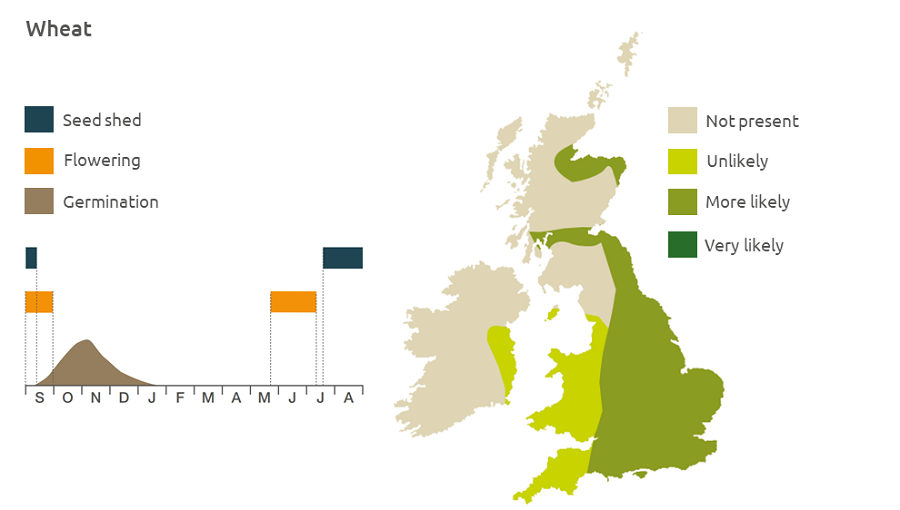- Home
- Knowledge library
- Distribution and biology of wheat volunteer weeds in the UK
Distribution and biology of wheat volunteer weeds in the UK
Wheat can be a volunteer weed in the next crop and can be competitive in oilseed rape and spring crops. Find out how to identify and control it.
Overview
Volunteer wheat (Triticum aestivium) can occur as a weed in the subsequent crop. It can germinate in early autumn or spring and has one generation a year. It seldom persists for more than one season if controlled; seed buried for two years is unlikely to remain viable.
- It is particularly competitive in winter oilseed rape and spring crops
Description
It is an annual tufted grass which may grow up to 1.2 m in short-strawed varieties or 1.8 m in long-strawed. It has hollow or pithy stems with flat broad leaves and a stiff appearance. The flower spike appears square in cross section.
Key features
Fruit: It has large grains.

Location and life cycle

Geographic distribution
Wheat grows as volunteers in subsequent crops, so tends to be found in arable areas.
Soil type
It prefers a soil which holds together well with good water retention. It prefers a high nitrogen input.
Seed statistics
- Seed longevity: 1 year
- Seed weight: 55 mg
- Seeds/ear: 40–50
- Seeds/plant: 120–150
Management
Where wheat seeds have been shed during harvest, light harrowing will encourage germination, to allow control before sowing the next crop.
For advice on herbicides, please speak with your agronomist or adviser.
When was this information last updated?
This page is based on content from the encyclopaedia of arable weeds publication. Since it was first released in 2008, the publication has been redesigned several times but not revised. However, it remains a good foundation for general information on the distribution and biology of weeds.

